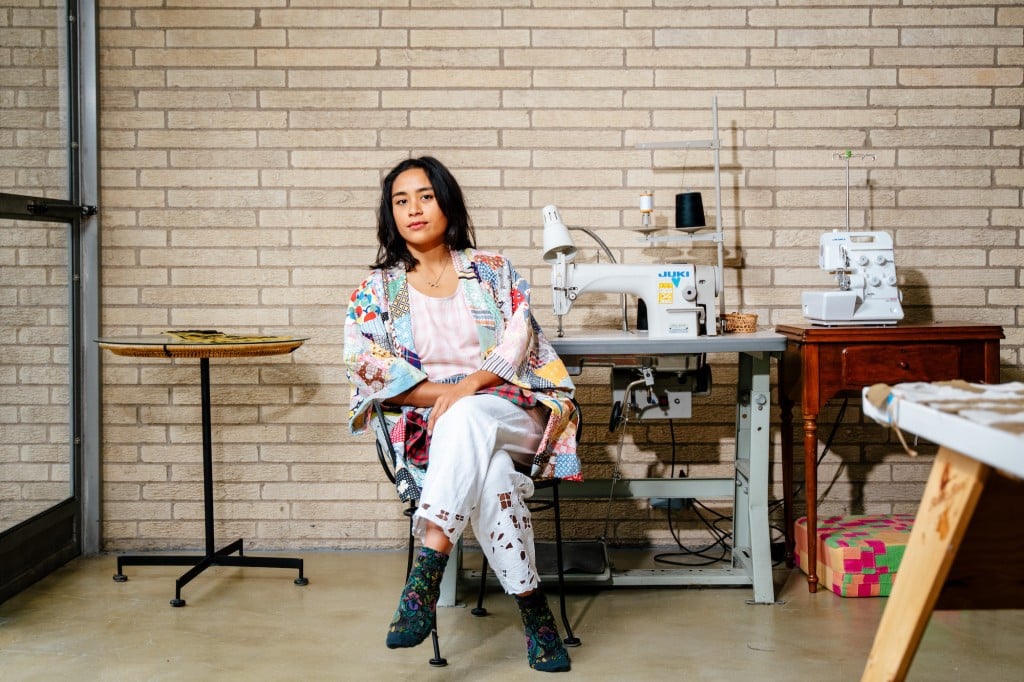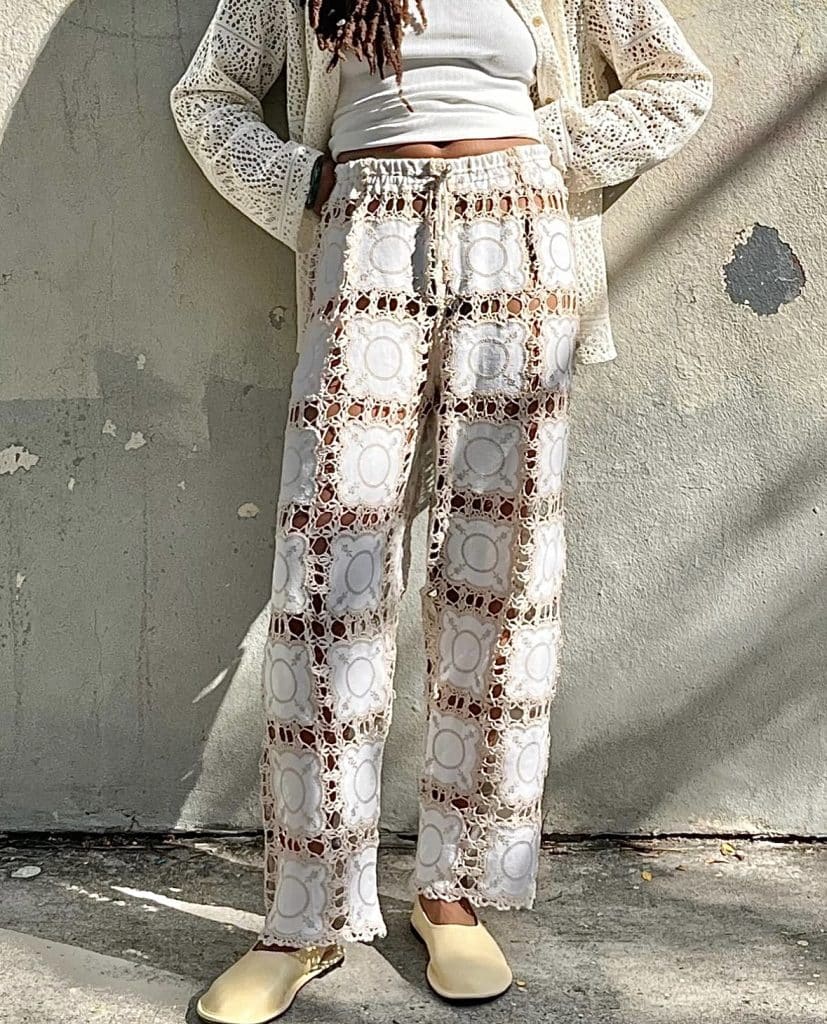
Go to any Goodwill or Salvation Army, and you will likely see a crocheted blanket that reminds you of your grandmother.
You may also see an embroidered tablecloth, the kind your relatives put out on special occasions, and it almost always comes with a story — a tale of a wedding or an immigrant tradition passed down from mother to daughter.
These hand-crafted textiles of another era, often made of natural fibers, are having a moment, one that textile artist and Grosse Pointe resident Katrina Sanj thinks will stay around.
Sanj has been upcycling cloth and textiles for years as a design solution to an environmental problem. She’s part of a movement led by artists and designers who have begun to question the values of the fashion industry and its role in polluting the earth through fast fashion.
Fabric waste is a massive problem in the fashion industry, with mountains of clothes being sent to landfills. An estimated 92 million tons of clothing are discarded yearly, and most will not biodegrade. Upcycling is a design solution to an environmental problem.
While some industry designers upcycle on a large scale, others, like Sanj, are transforming vintage materials into one-of-a-kind pieces of equal or higher quality.
Sanj grew up in a Filipino family that deeply appreciated textiles. She says there were always Balinese tapestries or print work from Japan in her home, so it felt natural to collect her own textiles.

She started going to flea markets, then to a depot called Scrap in Northern California, where she is from. After dropping her son off at preschool, she would dig through bin after bin, looking for vintage and dead stock textiles (surplus fabrics not used in production) made of all-natural fibers. She began sewing clothes for herself when she recognized how different her body felt in non-synthetic clothes.
“I started to incorporate more natural textiles in my daily wear. And then you notice how much better you feel. Now I notice how if something is synthetic or polyester, my skin feels repelled by it,” Sanj said.
Six months before the pandemic, Sanj and her family moved cross-country to live in a mid-century modern home in Grosse Pointe. It was a dream home for Sanj and her husband, Victor, a contemporary painter. The floor-to-ceiling windows, open floor plans, wood, and indoor-outdoor living were perfect for growing her family, and there was plenty of room for cutting tables, textiles, and sewing machines.

But with few friends and her family more than 2,000 miles away, the isolation of the pandemic got to her. She needed an outlet and began going to estate sales across metro Detroit. The houses, she said, “were full of interesting things often collected over a lifetime. I love old stuff. I enjoy exploring different environments and time periods.”
And unlike in San Francisco, which has a more transient and young population because of the high cost of living, Sanj said, “in Michigan, families often lived in the house and had things for 60 or more years. Sometimes, that person would have an embroidery collection or be a fan of sewing or fabric, and you could find a gold mine.”
You can feel the love in her voice when she talks about the tablecloths and embroidery she finds. “They’re really important pieces, which is [why] I think I’m drawn to them,” Sanj said.
Before moving to Michigan, she worked on large panels made of repurposed silk, and was commissioned to make a large drape out of vintage bar cloth and Aloha prints made from old Hawaiian shirts and muumuus.
With new creative energy, she felt inspired to make clothing. At first, she created pieces for her son, and then made a pair of pants from a vintage lace tablecloth. She posted the pants on Instagram, and they sold instantly. She posted another pair, and those sold too.
Sanj’s approach taps into the zeitgeist. Instagram and TikTok are full of young designers creating clothing out of vintage material found at Goodwill or yard and estate sales. Local artist Dessislava Terzieva makes tablecloths from old silk scarves, and designer Selina Eugenio makes summer dresses and blouses from vintage tea towels.

Upcycling is an artisanal approach to textile waste that requires innovation and creativity and is an inherently environmentally friendly solution to textile waste. The movement has made the pages of Vogue, Elle Magazine, and Marie Claire, and it’s here to stay.
The quick sale of Sanj’s one-of-a-kind pieces has encouraged her to design a collection.
“Eventually, I started having wardrobe capsules that I would put on my website,” Sanj said.
The requests didn’t stop, and soon, she had more orders than she could handle. But instead of ramping up production, Sanj slowed down. She didn’t want to feel overwhelmed but still wanted to be creative. Sanj has a two- to three-month waiting list for her pieces, and her customers are more than willing to wait.
Slowing down allows her to be a mom and have time to create unique children’s clothes.
“Obviously, I need to make money, but that is not the reason that I’m making any of these things,” Sanj said. “But I also don’t feel like I’ve gone fully into high production like I’m in a businesswoman mode.”
Read all stories in our series Inside Detroit’s circular fashion economy.

